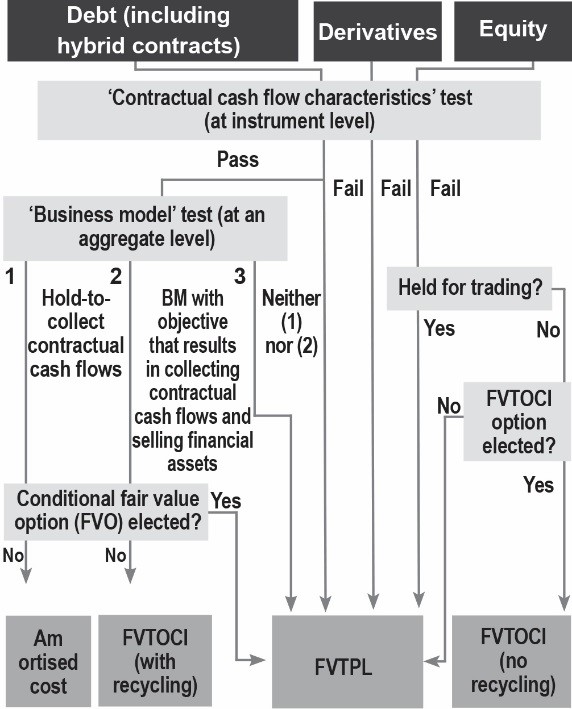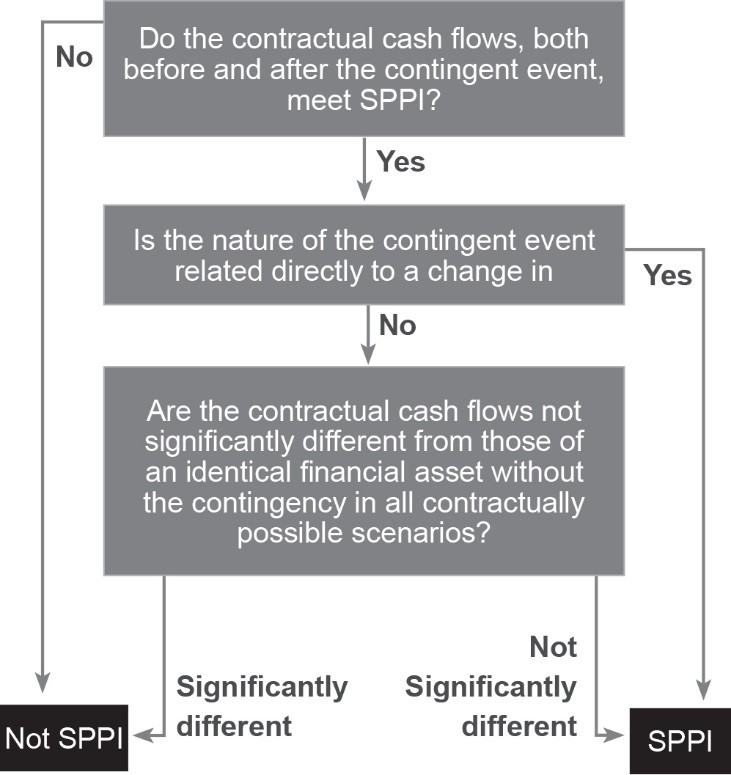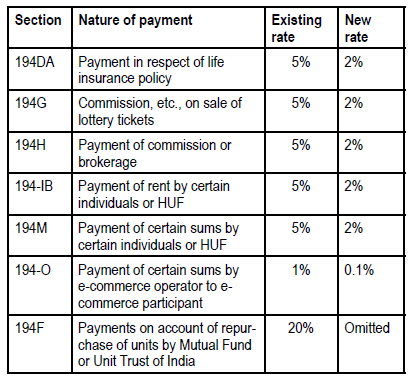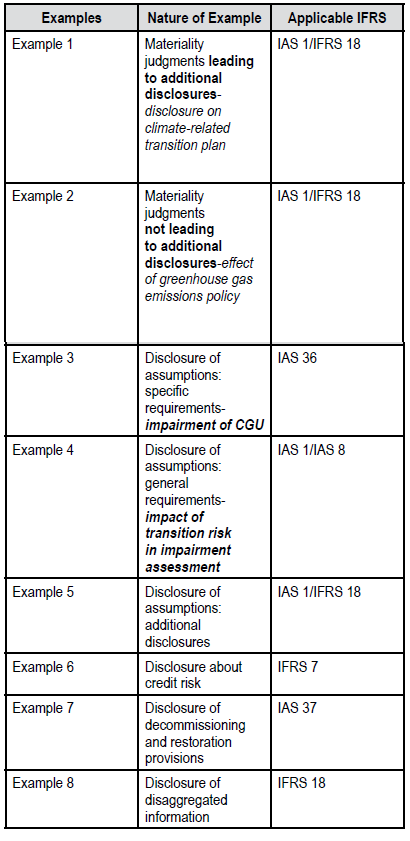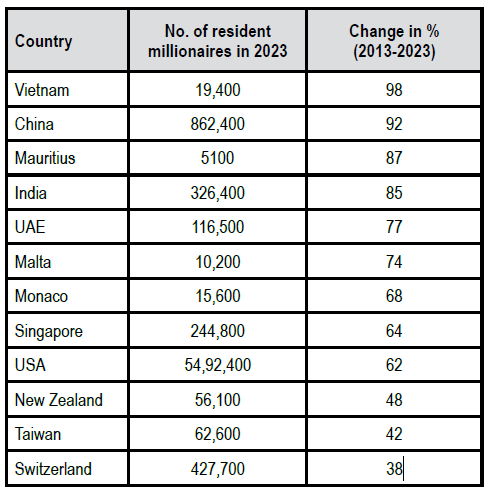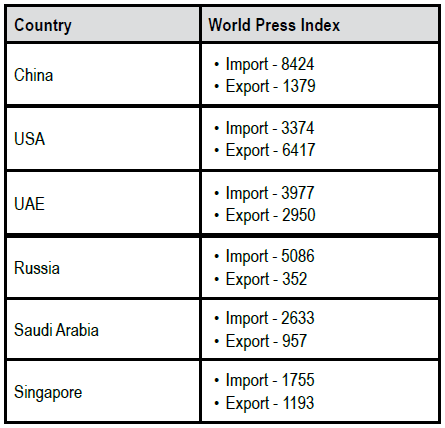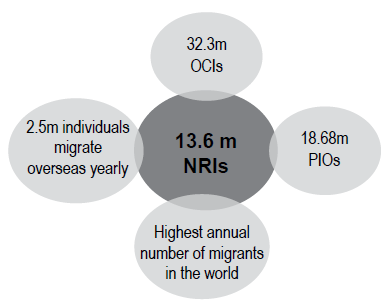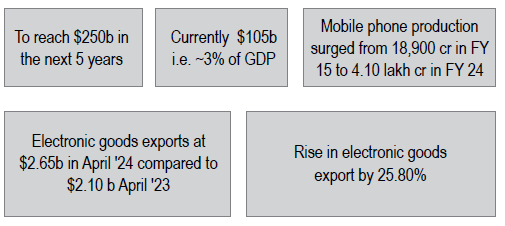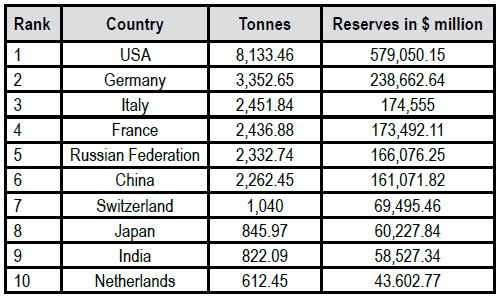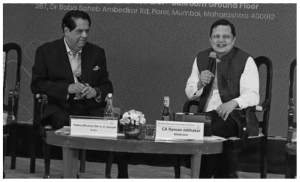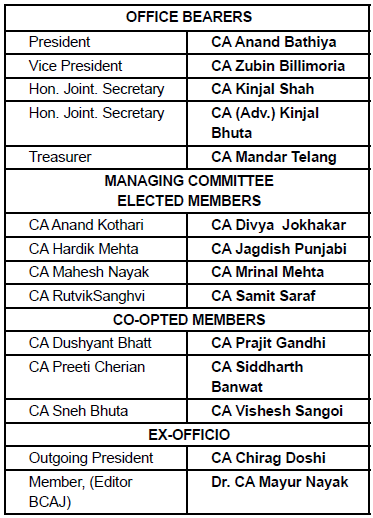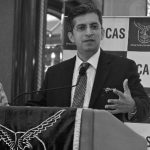
“WHEN YOU ARE BUYING EQUITIES, HAVE THE BUSINESS OWNER’S MINDSET, RATHER THAN TRYING TO FLIP IT EVERY NOW AND THEN”
BCAS and the CA profession have completed their 75 years of existence. In order to commemorate this special occasion, the BCAJ brings a series of interviews with people of eminence from different walks of life, the distinct ones whom we can look up to, as professionals. Readers will have an opportunity to learn from their expertise and experience, as well as get inspired by their personal stories.
Here is the text (with reasonable edits to put it into a text format) of an interview with Rajeev Thakkar.
Rajeev Thakkar is the Chief Investment Officer & Director, PPFAS Asset Management Private Limited, the asset manager of PPFAS Mutual Fund. As of March 2024, the Company has an asset under management of over ₹64,000 crores.
Rajeev Thakkar possesses over 30 years of experience in various segments of the Capital Markets such as investment banking, corporate finance, securities broking and managing clients’ investments in equities. Rajeev strongly believes in the school of “value-investing” and is heavily influenced by Warren Buffett and Charlie Munger’s approach. His keen eye for ferreting out undervalued companies by employing a diligent and disciplined approach has been instrumental in the scheme’s stellar performance ever since he assumed the mantle.
He resists the temptation of entering speculative stocks during extremely bullish times as he believes that it is not appropriate to wager on clients’ funds and faith by chasing companies that one does not have any conviction in. He strongly believes that only stocks purchased at the right valuations will provide long-term returns and is unperturbed by short-term underperformance. He is a Chartered Accountant, Cost Accountant, CFA Charter holder, and a CFP Certificant.
In this interview, Rajeev Thakkar talks to BCAJ Editor MayurNayak, past editor Raman Jokhakar and Journal Committee member Preeti Cherian about his winning equation, investor behaviour, his advice to investors, company management, auditors, directors, gold as an asset class, de-dollarisation, speculation, the regulatory framework in India, great investor habits and routines and much more…
Q. (Mayur Nayak): Welcome, CA Rajeev Thakkar. On behalf of the Bombay Chartered Accountants’ Society and the Journal Committee of BCAS, I, together with CA Raman Jokhakar and CA Preeti Cherian, thank you for this opportunity to interact with you.
A. (Rajeev Thakkar): Thank you. I have not been part of the profession formally since 1994 when I moved to the financial markets, but my formative years were spent doing my CA articleship and my interactions with Chartered Accountants started since then.
Q. (Raman Jokhakar): Thank you, Rajeev. Morgan Housel has famously said that average returns for an above-average period equals extreme outperformance; he believes this is the most obvious secret in investing. What is your winning equation when you measure performance as a fund manager who is stepping into the shoes of the investors?
A. (Rajeev Thakkar): We studied this one formula in high school, which, unfortunately, a lot of people do not remember in their grown-up years; that formula is the compound interest formula, A = P (1 + R/N)nt; where “A” is the final amount, “P” is the principal amount, “R” is the annual interest rate (decimal), “n” is the number of times interest is compounded per year (12 for monthly) and “t” is the time in years.
If we look at the formula, there is only one term which is exponential in the formula, and that is, the number of years. Addition, multiplication move slowly, but the exponential term moves very rapidly after a certain period. So, if you invest long enough, the number of years “t” is a bigger factor driving the returns. Something which will give you 25–35 per cent for six months will not be that meaningful of a return driver as compared to something which will, let’s say, give you 15–16 per cent over 30–40 years. That is what he means — invest for an above-average period.
In our case, we do what is commonly referred to as ‘active investing’, where instead of putting all the client’s money into stocks which are part of the indices, we identify those companies (that) we believe will outperform the index, and we invest in them. Sometimes, we succeed in this, sometimes we don’t. Our journey has been satisfactory. On average, we have managed to do better; but again, more than the return, the longevity matters. I completely agree that one should look at long-term compounding; but, if in the process, you can do better than the index, you will be even more successful.
Q. (Mayur Nayak): When you talk about the long-term, what is the horizon you look at? Is it 5, 10 or 15 years?
A. (Rajeev Thakkar): Look at the behaviour of our family or our friends or even our behaviour. Typically, in an Indian household, jewellery is passed from one generation to another. We add to the existing jewellery stock; very rarely do people sell jewellery which has been inherited. People buy a home and stay in the same home for 20–30 years. Even if they change the home, they sell that and buy something even more expensive by, typically, putting in some more money. An employee joining the workforce at the age of, let’s say, 25, will regularly put money in the Employees Provident Fund for 35 years till retirement. We buy LIC policies for 20–30–40 years. Yet when it comes to equity investing, the moment we buy the stock, we put it in Google Finance, Yahoo Finance, Money Control, some app or the other, and the TV channels will show you tick-by-tick price data. There is this urge to do something — sell something, buy something else. And we do not have a long-term outlook for it.
At PPFAS, we look at equity as, ‘effectively owning a part of the business’ when we buy shares of the company. When you buy TCS shares, you are partnering with the House of Tata in providing IT services. When you buy Bharti Airtel shares, you are partnering with the company in providing telecom services. Now businesses go through their ups and downs in terms of demand cycles, competition, environment-related matters, etc. Sometimes, the market sentiment will cause share prices to go up and down. We have had long periods of time where equity did nothing; we have also had periods where equities gave supernormal returns — these returns have come only to those who have had the patience to hold through the long up-and-down cycles. The mistake that people make while driving their investment vehicle is that they only look in the rear-view mirror. If the past five years have been good, they will come and invest heavily. If the past five years were bad, they will withdraw or not add money, which is precisely the wrong way to look at it.
To answer the question, “How long is long-term?” you should look at it like you look at your Employees’ Provident Fund or your insurance policies. Equity is the longest asset class; so, when you buy equity, there is no maturity date. As all Chartered Accountants know, it is the permanent capital of the company. Now, on the other hand, a bond will have a maturity date. So, when you are buying equities, have the business owner’s mindset, rather than trying to flip it every now and then.
Q. (Raman Jokhakar): Managing risk is a key part of investing. Some say that even more important than return is the management of risk. What strategies do you employ to mitigate the risk of losses or the risk of permanent loss of capital during market crashes or economic downturns or, you know, black swan events like COVID, etc?
A. (Rajeev Thakkar): So, one thing which is not very widely appreciated about losses and risk is that people generally tend to equate the upside and downside in their minds. If you make 10 per cent and then, you lose 10 per cent, people think they are more or less quits. Well, let me give you some vivid examples.
If you lose 50 per cent, to come back to where you started, you do not need a plus 50 per cent, you need to double your money — you need plus 100 per cent returns. Say, from 100 you go down to 50. Now, from 50 to go back to 100, you require a 100 per cent return. Then again, if you fall from 100 to 25, that is minus 75 per cent; you need to take your money up by 4X to go from 25 to reach 100.
If your return in year 1 is 25, year 2 is 15 and year 3 is 20, you cannot add the three numbers and divide by three to get the average return — you need to multiply the returns. So, in a scenario, where returns are multiplicative, if any one number is 0–100% (investment goes to 0), you get checked out. And similarly, if any one number is a big negative, coming back to par becomes very, very difficult.
Permanent loss of capital needs to be distinguished from what Warren Buffett calls ‘quotationalloss’. After you buy your share, the price could either go up or down. It is almost a 50–50 per cent probability in the near term. Market prices keep bouncing around all the time, so the permanent loss of capital comes only when the mistake is so bad that chances of recovery are either zero or the time taken to recover will be so long that effectively all capital will be gone. This can happen in a situation where the company you buy shares in goes bankrupt. That is one very clear example of permanent loss of capital. This can also happen on account of fraud, excessive leverage or very, very severe business downturns.
If you invest in debt-free businesses or minimal debt or cash-rich companies where the management has a good track record over decades, the chances of fraud are less. That is one thing to look out for while managing risk; buy into businesses which are not that prone to disruption hits. If the business environment changes every six months, then what is a very successful business model today may not work in a year. So, buying into stable businesses helps.
The second reason for permanent loss of capital could be if you have severely overpaid — where the drawdowns are 80–90 per cent. This happened in the late 1990s with what was called New Age or New Tech businesses: technology, media, telecom or internet, communication, and entertainment — the ‘new economy stocks’ as they were called. Those fell significantly after the crash, and people took almost a decade to come back to par and, in some cases, the money was completely lost. Similarly, we saw a cycle in 2007 where people were valuing companies on potential land banks and how they could get monetised. If we avoid these mistakes, the other smaller mistakes get evened out. In a portfolio where let’s say, there are 20 stocks, 10 could do reasonably well, 5 could do exceptionally well, and the other 5 may not do well at all; so, on average, you tend to do reasonably ok.
So, one, guard against fraud, excessive leverage, or disruption, and two, avoid paying very, very excessive valuations to avoid permanent loss of capital.
Q. (Mayur Nayak): Very well answered. Just to take a cue from that, say in a case like Satyam, where there is a sudden or permanent loss, in that situation, how would you react because there is total uncertainty as to whether the company will revive? So, should one stop loss?
A. (Rajeev Thakkar): Let’s say you have invested in 20 businesses, and you have, on average, 5 per cent in each business. Any one stock going to 0 will affect your portfolio value by 5 per cent. 100 will go to 95 if a particular stock goes to 0. Now if the stock market, on average, is giving you a 12–15 per cent return, then you would have to wait for the remaining stocks to give that return to make up for the loss (that) you have suffered. What to do in a specific scenario requires (1) knowledge, (2) skill set, (3) temperament and (4) a certain amount of luck.
There have been people who have invested in downturns where they saw that whatever has happened is not fatal for the company, and they could make huge returns from buying into such a scenario. Then again, there have been scenarios where one should have sold off in that environment. Warren Buffett famously put 40 per cent of his partnership assets into American Express after a scandal broke out, and that worked out very well for him. In India, we have had banks which have gone completely bankrupt, like the Global Trust Bank, or something like Jet Airways. If something is going bankrupt, you will lose all your money. So, after a crisis hits, should you exit that stock or should one buy more? The answer depends on your understanding of the balance sheet, your understanding of the business and how you see the future playing out.
Q. (Mayur Nayak): I think you gave a very important answer, that one should diversify their portfolio as much as possible. To quote Morgan Housel again, “Things that never happened before happen all the time.” Can you share your experience of navigating previous market crises such as the 2008 financial crisis and COVID?
A. (Rajeev Thakkar): Both were very, very interesting in terms of that they happened during my career as a professional investment manager. An individual can choose to do what he or she wants. But a professional investment manager is answerable to a whole set of people. Luckily, we were able to navigate reasonably well during both these crises. COVID was different from the global financial crisis; the proximate causes were different. However, one common theme across both crises was that stock prices came off significantly. So, in COVID, at the lows, you saw something like a 40 per cent drop from peak levels; during the global financial crisis, it was a 60 per cent drop — this is at the index level. Individual stocks would have fallen even more.
The common theme across both these crises is that initially, a few years were / will be difficult for the business environment, economic growth could be slow and there could be losses due to hitherto unseen situations. So, in the case of the virus outbreak in China, the hospitality sector was badly affected, airlines could not operate and hotels could not operate. Or for example, the subprime crisis in the US affected the inter-bank liquidity in India. One does not know what impacts will be there, and what 2nd / 3rd / 4th order effects will be there in a crisis kind of a situation.
My advice is to firstly, go through your existing list of companies where you have invested. The key criteria to look at is, will this company survive over the next three to four years on its own without government support, without anything else? If the answer is yes, you can hold. If the company has too much leverage, if interest payments and principal payments are due, if they are going to be facing issues servicing their loans, then their assets will most likely get sold off, and as a shareholder, you will end up with nothing.
Secondly, let’s say, the next three years’ earnings are 0, but if the stock price is down 50 per cent, in most cases, it results in a ‘buy’ kind of scenario, as long as the business is going to survive because, in the life of a business, three years is a relatively short period. The inherent assets do not go away; the inherent business value does not go away. From the intrinsic value perspective, it does not have that big of an impact, maybe a 10–15–20 per cent value reduction; if the discount you are getting is much larger, it mostly results in a ‘buy’ kind of scenario.
Q. (Raman Jokhakar): In the coming years, the crisis may be different, or may be of a mixed nature. For example, we had this pandemic, a financial crisis. With impending war and the volatile geopolitical situations in some areas, all these could get enmeshed and create a new form of crisis. How do you see such kind of crisis affecting us as investors?
A. (Rajeev Thakkar): Sure. So, several things could go wrong: you could have a meteor strike the earth, you could have a nuclear war break out, you could have cyber-attacks and/or ransomware attacks, you could have political instability or you could have a civil war kind of situation. Various things can happen in the realm of possibilities. If you are investing in equities, there must be a certain amount of optimism that the world will continue to do well. Otherwise, one gets into too much of a defensive nature. We jokingly tell people that if something strikes the earth and all the life as we know it is wiped out, will it then matter whether you invested in gold or bonds or equities? No one will be around to see the asset values decimate.
Coming to asset allocation, how much emergency money / liquid money to keep, how much to put in gold, how much to put in asset classes like REITS (Real Estate Investment Trusts) for regular cash flow, how much to put in growth assets like equity all depends on personal circumstances — personal risk tolerances, age, financial goals, all these things. But once you decide on asset allocation, it helps to tune out worrying about all the things that could go wrong. Occasionally, things will go wrong. But on average, things even out. If people were equity investors in pre-Nazi Germany, most likely, their portfolios would have been wiped out. Or if someone was an equity investor in China or Russia before communism, their holdings would be zero, but so would be everything else, including their large homes, which would be taken over by the state. There are some things you cannot do anything about, except for maybe global diversification; at the end of the day, you should not worry too much about those things.
Q. (Raman Jokhakar): How do you manage customer / investor expectations and show it through your performance, because people do expect some kind of outcome from their investment?
A. (Rajeev Thakkar): We see a very strange kind of investor behaviour. At one end, investors will be very, very comfortable buying insurance plus mixed investment products, where they will get maybe 5–6 per cent return over the long-term, or they will be happy with their bank fixed deposit rates; but when it comes to equity, immediately the expectations go to 20–25–30–35 per cent, the higher, the better. Our job is to communicate to the investors that equity in the short run is a risky asset class. There are periods where returns can be negative. There can be long periods where returns are subdued, and only if you hold it through a longer term, can you expect moderately good returns — ‘moderately good’ meaning something better than fixed income securities and better than inflation. We portray the different kinds of rolling returns that have been achieved over the index level in the past, so that gives some grounding to our communication. We try and explain both these factors: (1) the requirement for long-term investing and (2) we tone down the return expectations whenever we can.
Q. (Mayur Nayak): That takes me to the next important aspect from the investors’ perspective — re-balancing and re-checking the portfolio. What should an investor consider as triggers to undertake this? And the period to review the portfolio — whether it is under a mutual fund or a mix of equity, debt and mutual fund and other asset classes?
A. (Rajeev Thakkar): People have different approaches to this aspect. Some people typically think of re-balancing as a tactical move, and many times, they mix it with upcoming events or their outlook on what is going to happen. I think this is where people go significantly wrong. To give you an example, people try to bet on political outcomes, and they invest accordingly, and invariably get it wrong. They end up losing not only in India but globally as well. People read the Brexit Referendum wrong, they read the Trump and Clinton elections wrong and they read the 2004 Indian elections wrong. This year, on the exit poll day, the markets were significantly up; on result day, markets were down. Again, we are up to all-time highs. People tend to swing between greed and fear and end up losing a lot of money — that is not the reason to re-balance.
The other reason for re-balancing could be because of their asset allocation. Let us say, someone’s asset allocation is 60 per cent equity, 40 per cent bonds. Now if equity does very well, the temptation would be to sell equity and buy more bonds. One could do that if that is the appetite. People should follow a disciplined approach and maybe review it once a year. Re-balancing once a year is reasonably ok. In my opinion, typically, people fall into two categories: either people are saving for retirement or people are consuming in retirement. If you are a saver, my recommendation is rather than selling one asset class and buying the other asset class, you can divert your incremental savings to the asset class which is underweighted. For example, say, the allocation is 70:30 between equity and bonds, and you put the year’s savings only in bonds so that the weightage of bonds starts going up. Each time you switch between asset classes, that is tax-inefficient; you end up paying tax without benefiting from that cash flow.
Similarly, if you are in retirement and you want to re-balance, withdraw from the asset class which is heavier than your target weight rather than trying to sell one and buying the other frequently. Buying–selling creates unnecessary transactions. If it is too lopsided, then sure, one can sell one (asset) and buy the other (asset).
Q. (Raman Jokhakar): Today we are in a slightly tricky situation – we are facing high interest rates and markets also keep going up, not only in India but also, say, in the US. What do you read into this? What are the causes and consequences? How should investors look at this? How do you look at it?
A. (Rajeev Thakkar): All Chartered Accountants know that the technically correct formula to value any financial asset is the discounted cash flow of any asset, be it a bond, aircraft lease, equity shares, real estate, etc. This formula helps you decide whether the asset is worth buying or not. One of the factors which affect this discounted cash flow is the discount rate you use. Logically, at higher interest rates, the discounting rate would be higher and at lower rates, the discounting rate is lower. So, when rates go down, the intrinsic value goes up.
The linkage between the federal funds rate, RBI repo rate to bonds has been very clearly established. In the case of government bonds, the cash flow is very certain — you know the exact amount you will get and the exact date on which you will get it. In equity shares, neither is the amount nor is the date certain. So, while interest rates do factor in terms of equity valuations, the linkage is not that very strong. The movement of stock prices is better determined by the growth prospects that people see in cash flows and the business environment. This partly explains the fact you mentioned — when interest rates were going up, we saw stock prices also go up. However, when interest rates come down, stock prices may or may not go up — as the linkage is not that very strong, rather it is a weak linkage.
Today, in terms of the environment, we have factored in a lot of positives that are there in India and globally — so, valuations are looking stretched. In one-off companies and sectors, you find opportunities. But if one looks at the overall market levels, I believe it is time to be cautious in equities.
Q. (Raman Jokhakar): Picking information at the right time and analysing it rightly is critical to investing. But like we CAs use the word ‘professional judgment’, how do you stay informed of what action to take? There is way too much information from various sources, such as regulatory changes, market developments, geopolitical risks, etc. How do you sift through all this information to arrive at your investment decision?
A. (Rajeev Thakkar): Firstly, when you are looking at a company, it helps to look at the market cap and total profits, rather than other parameters. Let’s assume you have enough money in your bank account to write a cheque and buy the entire company at the current market price. Once you buy it, you are the business owner and now the stock ceases to be listed on the exchange. Would you be happy being a business owner at the current offered price? That kind of thinking really clarifies matters a lot.
I believe most of your readers / listeners are Chartered Accountants. Let’s say you are in practice and some other Chartered Accountant is retiring and offers their professional practice to you for a fee. Would you buy that professional practice at the price offered, basis the same factors you would consider to evaluate a listed business? Chartered Accountants in practice would know what a professional practice is. Similarly, you should be aware of what the business of the listed company is. If you are analysing a telecom company, but you do not know anything about telecom, it is difficult to arrive at a business value. Each analyst and each manager is familiar with a certain number of sectors such that they can arrive at a reasonable judgement; do not stray beyond that, that is my first recommendation; if you do stray, then the chances of making a mistake go up.
You mentioned regulatory changes and other changes too. Typically, the chances of making a mistake in such businesses (where regulations change very frequently) are very high. Jeff Bezos once famously said that he frequently gets asked, “What’s going to change in the next 10 years?” And that he rarely gets asked the question, “What’s not going to change in the next 10 years?” The second question is the more important of the two because one can build a business strategy around the things that are stable in time. In the retail business, customers will always want lower prices, faster delivery and bigger selection. It is impossible to imagine a future 10 years from now when a customer will come up and ask for higher prices, slower deliveries or lesser selection. When one has something that one knows is true, even over the long term, one can afford to put a lot of energy into it.
Similarly, as investors, we need to focus on businesses which will look largely similar 5, 10 or 15 years from now. The basic needs of humans — buying consumer goods, soaps, shampoos, biscuits, basic banking, basic insurance — all these have not changed too much. Whereas if you are in some niche technology space or some biotech space where some regulatory approval could either come or not come, then your entire valuation hinges on that one event happening or not happening; that’s when things become very difficult. Stick to things that you understand and things that are relatively slow-moving. Of course, changes are there everywhere. Even in consumer goods, for example, Gillette which offers shaving products faced competition from a direct-to-consumer brand in the US-based Dollar Shave Club. Be on top of the change; focus on things that are slow moving and then take your time. Opportunities will come your way.
Again, in the late 1990s, all tech companies were overvalued. So, if you bought Infosys or Wipro in the late 1990s, you would have lost money or you would have not broken even for seven to eight years. Ironically, after seven years, if in 2007 you bought these tech companies, you would have done well despite the global financial crisis. So, at what valuation you buy matters, apart from all your business analysis, quality checks and all that and much more. Many times, things are obvious. It’s just that you need patience to wait for the right opportunity to come your way and when it does, you should have the courage to act.
Q. (Mayur Nayak): So, Rajeev, you made a very profound statement that one should focus on things that are not going to change. And one of the things which people expect to continue is the governance structure of the investing company. Broadly speaking, what is your broad governance evaluation mechanism?
A. (Rajeev Thakkar): I think more than the technical aspects, past behaviour matters. Sometimes people try to use too much of a checklist kind of approach: How many board meetings did this director attend / not attend? How many other boards is this director present on? I agree there is some importance in that, but are these the people running the company? Are they fair to the minority shareholders or not? Do they have a personal interest in the well-being of the company? Let’s say the promoter group has just a 3 per cent to 4 per cent stake in the company. Then they are not going to be so bothered about minority shareholders. They may be interested in building their empire or paying themselves excessive remuneration. So, essentially, are they being fair to the minority shareholders? Do they have the competence to run the business? Are they energetic? All these things matter.

Seen in the photo from left to right: CA Raman Jokhakar, CA Rajeev Thakkar, Dr CA Mayur Nayak and CA Preeti Cherian
Warren Buffett listed three things. Firstly, you want integrity. Without integrity, nothing will work, no matter how good the business is. Secondly, you want competence. Someone may have integrity but does not know how to run the business; then it will not work out. Thirdly, you want energy. You want commitment in terms of time and effort. If someone has integrity and competence but spends all the time on the golf course, then again, it won’t work. So, you need a combination of these three; but largely, you need integrity and competence.
Q. (Mayur Nayak): Excellent answer! Moving on, how do you see the role of auditors as one of the lines of defence? There are many auditors who have been involved in fraud across the world. How do you see the role of auditors in this governance structure?
A. (Rajeev Thakkar): As investors, we have access to the annual accounts where the auditor puts theirs and the firm’s names behind the assurance that is being given. And that matters a lot. While studying auditing, we were told that we are watchdogs and not bloodhounds. So, if the fraud is too convoluted, there is a limitation on what the auditor can do and cannot do.
The one interesting change in recent times has been in the format of the audit reports. Earlier, you just stated whether these statements were true and fair. Now you have to make additional qualitative disclosures. So, when you read key audit matters and things like that, as an investor, you can decide that this business is too complicated. Then no matter what the published statements say, if there are these significant uncertainties, maybe it’s better to stay away from the company.
Let’s say, one company has a simple standalone balance sheet in India — big promoter stake, long track record, understandable business, not too many issues in terms of inventory valuation, depreciation estimate, impairment, etc., — you can go with the financial statements and invest in it. Now, let’s say, there is another company with 200 subsidiaries in multiple geographies, 20 acquisitions, a huge amount of goodwill lying on the balance sheet and huge paragraphs upon paragraphs of key audit matters. Now in such a case, the reported financials are just these numbers, meaning you can’t nail them down with any precision. Again, if the nature of business is such that it involves a lot of estimates, what is the chance of completing these projects? In the famous case of Enron, the whole structure was so complicated that people could not understand what was going on inside. It’s better to avoid such companies, I think.
When you look at the audit report, irrespective of who the auditor is, the description generally gives you enough information as to what to stay away from. And interestingly, there is a lot of data disclosure these days, apart from whatever is there in the auditor report. There are a lot of data points which are put out by the government and regulatory authorities; there are subscriptions that investors can take and look at. For example, you can do a case search on all the litigations where the company is a party either as a plaintiff or as a respondent, you can look at whether they are filing GST returns on time or not, whether they are paying PF dues on time or not, how many employees do they have, so on so forth; various checks can be done in that manner.
Q. (Mayur Nayak): Today, auditors are regarded as conscience-keepers for the stakeholders. Do you believe that auditors have discharged their duties ably or have they failed in some areas? What more can be done by various regulatory authorities like NFRA and ICAI to make the system more robust?
A. (Rajeev Thakkar): While I am not part of the audit profession as such, I regard myself as a little bit of both an insider and an outsider. As someone with a Chartered Accountancy qualification but one who is a consumer of the accounts rather than someone who writes an audit opinion, I think we are expecting far too much from auditors. Even the way the financials are reported these days — I am slightly old school in terms of preference — things such as historical cost accounting, the adjustments would be done by the end investor or the users of the financial reports. Nowadays, with this fair value concept, making comparisons across time has become difficult because earlier statements would be under one accounting regime and the later statements are under a different accounting regime. So, in our mind, we must redo the numbers and try and compare again. It is not so much of a challenge in the kind of businesses that we invest in because they are simpler businesses, and we don’t place too much importance on a particular quarter’s result or a particular year’s result — when you look at it over 5 years, 10 years, these things even out. So, it is not so much of a hassle.
Q. (Mayur Nayak): Do you use any risk management tools or instruments to hedge against potential losses? Anything from the AI space?
A. (Rajeev Thakkar): Ask the saying goes, artificial intelligence has not prevented natural stupidity. The market cycles are still what they are. If you look at the US markets, for example, you have these meme stocks where the companies are almost bankrupt but because some people are pumping them up on social media, the stock price keeps going up. And then when it goes up very, very dramatically, the company says, oh, this is a golden opportunity, let’s issue more shares and raise actual cash, and then the stock price collapses, and the capital gets misallocated because the business is inherently bad.
Most of the work we do is old school. AI helps in terms of doing certain activities to speed up things. For example, if you want AI to go through all the conference call transcripts and go to a particular term which was used, let’s say, ‘cloud computing’, then you could do that. You could use AI to scan social media posts for a new car brand that has been launched and do sentiment analysis of the reviews — positive or negative. Those kinds of things could be done. You could use AI to summarise stuff but do not outsource the decision-making to AI. We do use things like derivatives for hedging and so on, but these are firstly not for speculation at all. My advice to the investor, especially the retail investor, is to stay completely away. We are the counterparty to them — whenever the retail investor does something foolish, we benefit from their actions.
A matchbox can be used both to light a fire in the kitchen and to burn down the building. Let me give you a simple example. A biscuit company will want to buy wheat, and a farmer will want to sell it. Now, the farmer may not want to take the price risk since the crop is standing; he may want to lock into a fixed price. On the other hand, the biscuit manufacturer may want to lock in the purchase price. So, they may partly enter a wheat futures contract and de-risk both their operations — this is a case of hedging. Now, there could be a commodity speculator who wants to speculate on the price of wheat. He will pay ₹10 as margin and take a position of 100 or 200 and when the price moves, he either makes a lot of money or loses the entire capital. So, it depends on what a person is using those instruments for.
Q. (Raman Jokhakar): Can you walk us through your decision-making process? This is surely the most important work that people count on you for. How do you decide when to buy, and of course, to sell?
A. (Rajeev Thakkar): Before deciding to buy a particular company or not a few things need to be checked out. First is the promoter quality that we spoke about, the integrity, competence and energy of the promoter, and the manager group. Second are good industry characteristics. Now the same business house may be very successful in running an IT services company and yet may fail very miserably in running an airline company because the businesses are different.
Today, anyone can walk into a bank and make a fixed deposit at 7.5 per cent p.a. If the business is going to generate a return on capital employed of 6 per cent p.a., why would you even invest in such a business? There are certain industries and businesses we rule out; if they do not have a track record of a decent return on capital employed, we simply do not invest in them. Third, we discussed leverage or borrowings. Borrowings increase the riskiness of our business. There are certain exceptions — utilities and banks typically are in the business of borrowing money but otherwise we stay away from leveraged businesses. The business should be understandable — if it’s a biotech company dependent on one approval coming for a particular medicine, I’m not competent to judge that company. It should be a business that we can understand. After all these criteria are met, I want a valuation that is reasonable. This is the decision-making process for a company per se.
We have a team of analysts covering different sectors. They track all the companies under their coverage on a regular basis. Periodically, an opportunity comes, and they pitch it to the fund management team, the investment team. How much to buy depends on the upper limits at the regulation level. We cannot own more than 10 per cent of a company across schemes. So, if the company has an outstanding paid-up capital of 100 shares, we cannot own more than 10 shares in the company across all our schemes. This is the first restriction. Also, as a per cent of our assets, we cannot own more than 10 per cent in a company. The company may be very large, let’s say, TCS, I cannot put 20 per cent of my clients’ money in TCS; I am restricted to 10 per cent. So, this is the second restriction. We also do not want to overextend in a particular sector; so, there are sectoral limits in place.
The weightage also depends on the relative attractiveness of different things. If I have five equally good opportunities, then it would be spread over all five. Of these five, if there are three better opportunities, then the weightage would be slightly higher in those three. Of some of the stocks that we currently own, if we get fresh client money, we would buy more of those companies if they are still attractively valued. If there is redemption, obviously we will sell to pay money to the unit holders.
Another reason to sell is when either the promoter and / or management integrity comes into question. Then the exit is relatively quick. If the business worsens significantly and that too on a permanent basis, then the exit is also very quick. Further, if the valuation keeps going up, we generally trim the position over a period. Then it is not a one-shot exit because there is no precise answer as to when something is overvalued; we would end up reducing the weight over a period.
Q. (Raman Jokhakar): These days, when money sort of keeps getting pumped in, with everyone investing in the market through mutual funds, what happens when there is so much inflow?
A. (Rajeev Thakkar): We are clear that we will not buy something which is overvalued just because money is coming in. The money will go to money market instruments which, in the current environment, give around 7.5 per cent p.a. Just because inflows are coming, we will not buy just anything.
Q. (Mayur Nayak): Investing in US securities – PPFAS MF’s well-acclaimed Flexi Cap Fund has exposure to US equity as well. What has been the experience of your fund to US exposure?
A. (Rajeev Thakkar): I’ll split the question into two parts. One is only currency and the second is investing abroad, especially in US markets.
One interesting thing about US markets is the opportunity to invest in larger companies — when you are buying into those larger companies, you are participating in the world economy. These companies don’t just operate in the US, they have global operations. Look at Microsoft, Amazon, Google and Meta (earlier called Facebook), these operate globally. In India, when people buy a new cell phone, among the first apps that they download are WhatsApp, YouTube, Google, Amazon, and things like that. So, when you are buying into US companies, you are buying their Asia business, you are buying their European business, their North American business, their South American business — everything comes to you together.
We do not have any view on the US$ as such. We are saying these are businesses on the right side of the business trends that are there — the business trends being the shift from traditional advertising to digital advertising, the shift from on-premises computing to cloud computing, from linear TV to streaming services like Amazon Prime Video or YouTube or Netflix, shift towards AI where again these companies are at the forefront – so these businesses are growing in terms of revenue now.
The US$ could weaken against other currencies, sometimes it could strengthen, which is ok. We are partnering in that business which is global. When we buy into a global business, what this does is that the India-specific ups and downs get muted on the portfolio level. Let’s say, there is a surprise demonetisation in India, there’s uncertainty around GST introduction or there’s border tension with China. All these things get muted in the portfolio — both positive and negative. Like, we had a surprise tax cut, Indian stocks went up, and global stocks obviously did not follow — so, the journey for the investors is smoother to that extent. Also, some opportunities are not available in India. We have a good corporate sector across various industry segments, but some segments are missing. For example, we do not have big EV players. So, if you want a very strong EV player, you must either buy something like a Tesla or BYD globally. If you want device manufacturers, you want to buy Apple or Samsung globally. Look at software and operating systems, we do not have the equivalent of Microsoft kind of companies in India, Google kind of companies in India or innovator pharma companies. Most of our companies are generic companies. A Johnson & Johnson kind of company is not there in India. So, you must look at overseas investing.
I do not have a view on currency; whatever the currency, if the business is valuable, people will pay for that business and the companies will earn a profit. About the central bank’s de-dollarising — clearly, I think the West has overplayed its hand in the Russia–Ukraine war. If a country has balances with you and you say, because I don’t politically agree with you, I’ll freeze or seize your assets, then people will move away. Even people who are not directly involved will say who knows if 5 years, 10 years from now I could be in a similar situation, I don’t want to be taking that risk now. Recently, we have had India bringing back gold to our shores; why keep our gold in foreign countries? Central banks have been buying gold as opposed to US treasury securities. I think that trend could continue. People could create strategic reserves of oil, industrial metals and rare earths, rather than just keep assets in the reserves, in paper money. Then it does not matter what currency you use as a medium of exchange. You could continue to use US$ because it is a temporary thing. If the balance is not too much, you could use $, €, ¥ or whatever.
Q. (Mayur Nayak): How do you see gold as an asset class? Because today we find both equity and gold going up seamlessly, silver is also going up. How do you look at them as an asset class?
A. (Rajeev Thakkar): Historically, gold has been able to protect purchasing power reasonably well, especially in India, against rupee depreciation or inflation and things like that. But it’s not my favourite asset class. Let’s say, you buy 10 grams of gold. Those 10 grams of gold after 10 years will remain 10 grams of gold. Instead of that, if you buy a business making cars, tractors or manufacturing mobile phones, they could set up new factories, increase turnover and increase profits. It’s productive — putting money in equities or lending money to businesses to generate employment. So as a country, it would be better if we put money in productive assets rather than buying metal, which will go into lockers.
Q. (Raman Jokhakar): There are alternative or competitive investment philosophies which state that the word “long-term” is like a cushion because, in the long term, everything anyways goes up. Instead, they propose to see the long-term view but also try and make money with a higher turnover of their holdings by calling it as being more dynamic.
A. (Rajeev Thakkar): Firstly, let us distinguish between two things — and I am not passing any moral judgment here — let us distinguish between investing and speculation. Let us say all of us sitting in this room took out a pack of cards and said let’s gamble, right? Can all of us be profitable at the end of the session? No. So if you win, I would have lost money to you. When we add up all the winnings and losses, the total will be zero, right? This is what is called a zero-sum game. In the market, speculation is a zero-sum game minus taxes minus brokerage. It’s a negative sum game; it doesn’t mean everyone will lose money. In fact, some people are very, very successful at this — case in point, Jim Simons, founder of the quant fund, Renaissance Technologies in the West. The fund has earned annual returns of around 60 per cent before fees and has one of the best track records. Overall, it adds nothing to the marketplace — there would be counter parties who would have lost money to that extent.
In investing, if all of us put money and, let’s say, start a restaurant and if that restaurant does well, can all of us make a profit? The answer is yes, because we are partners, and the business is doing well — that is investing — we are in the investing camp. Does it mean that you should sell businesses which are not doing well and buy more of things which are doing well? Periodically, you should eliminate companies that are deteriorating and put money to better use. But this continuous need to try and find the next big theme that will work well goes into the realm of speculation. Some people are successful at that. That is not our style. We are in the investing space where the management quality, the balance sheet quality and understanding the business and values are all that matters. Renaissance Technologies that I spoke about? They did not even know what the companies were doing or what the tickers were doing for them. It was a symbol and price. They would analyse price, volume, data and some other indicators and they would keep buying and selling all the time. They did not care about related party transactions, whether it was a qualified annual report or a clean audit report.
Q. (Raman Jokhakar): SEBI has been regulating the mutual fund industry now for almost 30 years. What do you have to tell mutual fund investors about the regulatory protection they have today compared to earlier?
A. (Rajeev Thakkar): I think with each passing day, investor protection gets stronger, and today, if you ask people working in the field, they sometimes feel, oh, is this necessary? We are already so well-regulated. So, of course, anyone in the industry will keep complaining all the time. But, net-net, everything that is required has been done. We are having this conversation after market hours because, during market hours, there are restrictions on what we can speak about, as while trades are going on, the information should not go out. Everything is audio recorded; there are video cameras in the dealing room recording people’s actions. All the securities are held with the custodian bank, so the fund house does not handle the pay-in / pay-out of the securities. There’s a panel of brokers. There are mutual fund custodians. There are registrar and transfer agent companies who provide services to investors on behalf of mutual fund houses. Portfolio disclosures are very detailed. The expenses that the managers can charge the investors are very tightly regulated and are brought down all the time. It is a phenomenal activity where the interest of the unit holder is kept paramount; the entire activity is overseen by a trustee company where two-thirds of the directors are independent — these are people not associated with the company.
So, a lot of measures have been taken, which is seen in the results. Anyone can just look at the number of investors flocking into mutual funds and the size of the assets. People, in this day of social media, immediately turn against you if the experience has not been good. The experience of the people who have been investing with us for a while has been good, and that strong word-of-mouth is helping — we have now reached roughly 4.60 crore unique investors in mutual funds. Till very recently, it used to be less than 2 crores; so, the numbers are growing and more people are coming in.
The one thing that SEBI cannot do anything about to protect investors is the tendency of the investors to invest by looking at returns from the recent past. One thing I think as an industry we could do better is this practice of launching thematic funds. In the late 1990s, mutual funds launched tech funds. In 2007, they launched real estate and infra funds. These are not great instruments for retail investors. Diversified equity funds are a good product. Diversified equity funds, index funds, fixed-income security funds — these are hybrid funds. These are good categories. In very niche industry-specific funds, typically, the end investor sometimes ends up getting a bad experience, so I think that is something that we could collectively do better by not launching thematic and sectoral funds, but otherwise, it is a very well-regulated product, and people are getting a good experience.
Q. (Raman Jokhakar): Compared to markets outside India, in your experience, do you feel there is something that could fall through the cracks as it is not being done and is not yet happening?
A. (Rajeev Thakkar): I think we are far ahead of other markets. Some of the things we have are not prevalent in other markets; for example, on boarding customers — typically, it is completely digitalised and centralised; once you have done a KYC, you can invest in any of the funds. Partly, the pain point right now is the frequent changes in the way KYC is done. Hopefully, we will resolve this very soon. I do not think too much is left now to be done, but otherwise what happens is someone who has done KYC six or twelve months back gets these SMS notifications saying to do this one more thing, else they will not be able to do XYZ, so that has caused some anxiety, but I think that will get resolved soon.
So, again, just to put things in perspective, globally, it’s not as easy, because here we have Aadhaar, mobile linkage, DigiLocker – all these things are seamless here. So, although there are some pain points, we are still better off than the rest of the world.
Q. (Mayur Nayak): We would like to now ask a few quick questions: if you had to list out three worst investor behaviours, what would they be?
A. (Rajeev Thakkar): Falling prey to greed and fear, panicking when markets are crashing and just rushing in when your neighbour is making a lot of money — that is one big mistake. The second big mistake is that people invest in fixed-income products and do not allocate enough to equities. Indians, in general, love physical assets like gold or bank fixed deposits and small savings instruments, but not equity. Another is looking at the rear-view mirror or as it is called, a sunk cost fallacy. Say, you have bought something at 100 and it’s fallen to 50, you know it is going to 0, but still, you do not get the courage to exit at 50 because you think it should go up to 200 for you to exit.
Q. (Raman Jokhakar): What are the great habits and routines of investors, meaning what should they cultivate?
A. (Rajeev Thakkar): I think curiosity is right up there — one must be a constant learning machine. Read all the time, talk to industry people as to what are the drivers of their business, what are the developments happening. Today, the challenge is not access to information; today, the challenge is filtering information. So, how to filter out the noise? How to filter out the useless stuff? Do focused work on what is important.
Q. (Mayur Nayak): Which are your all-time top five books or courses on investing that you would recommend to investors? Also, any blogs that you follow particularly?
A. (Rajeev Thakkar): My vote goes to some accessible writing where one doesn’t need (to have) too much of a background. I believe Peter Lynch’s books are accessible in that sense — One Up on Wall Street and Beating the Street. Peter Lynch is the famous mutual fund manager of Fidelity Investments in the US, where he has a reasonably long track record.
Warren Buffett’s open letters to Berkshire Hathaway shareholders and the videos which are on CNBC’s website are easily accessible to all — these are very, very interesting. Unfortunately, he hasn’t written a book himself. But there are books written on him, on his investing style, so you could pick up one of those, apart from the letters – Buffett:The Making of an American Capitalist is one such book.
For understanding the qualitative aspects, you could read Common Stocks and Uncommon Profits by Philip Fisher where he looks at buying quality companies for a very long period. Then there are a lot of books on behavioural finance. Our company’s founder, Parag Parikh, has authored two books; look up those. One is Value Investing and Behavioural Finance and the other is Stocks to Riches. You mentioned Morgan Housel. His blog and his books are also interesting.
Q. (Mayur Nayak): One more personal question. How do you relax and unwind?
A. (Rajeev Thakkar): So, the organisation has been good in the sense that culturally, we have never subscribed to working long hours or working weekends and things like that. Typically, once we leave the office, we leave work behind in the office. Spending time with the family, listening to music, watching some content on streaming services or reading a book — that is what I like to do.
Q. (Mayur Nayak): Any favourite non-investing or non-fiction books you would want to recommend?
A. (Rajeev Thakkar):Deep Work: Rules for Focused Success in a Distracted World is something I would highly recommend. The 7 Habits of Highly Effective People is again a must-read.
Q. (Mayur Nayak): If you were to write a book, what would be the title?
A. (Rajeev Thakkar): I am not someone who will give something very, very original. In that sense, it would be more on the lived experience part of my journey in the investment process, but it would be something like experiential investing. Charlie Munger was a big fan of vicarious learning. So, instead of making the mistakes yourself, learn from someone else’s mistakes or learn from other people’s experiences.
Q. (Mayur Nayak): Is there any last advice you would like to give to our readers or investors?
A. (Rajeev Thakkar): I think people spend far too much time picking individual stocks and individual mutual fund schemes, tracking it all the time, and spend very little time in terms of the basic asset allocation. Whether you bought company A or company B will have less of an impact on your personal finances than how much money you put in equity versus bonds. People will put maybe 5 per cent of their net worth in equities and then expect that 5 per cent to make them billionaires; it doesn’t work that way. Having a meaningful allocation to a diversified portfolio and holding it for the long term is what will create wealth.
Q. (Preeti Cherian): Mr Thakkar, when I look at you, there’s a Zen-like quality around you. So, my question to you is, does anything ruffle you?
A. (Rajeev Thakkar): Do things upset me? Of course, they do. Things upset any human being. It is not that there is a global financial crisis, but no impact; there is COVID, but no impact. Obviously, there are concerns and there is anxiety. It is not just about markets going up or down. During COVID, it was personal health, being locked up at a place, not even being able to go out for a walk in the initial days — those things ruffled people, I think. One should have a meditation practice, to help oneself calm down. I’ve done vipassana for 10 days and occasionally practise it.
Q. (Preeti Cherian): In your role as CIO, do you exercise a casting vote when it comes to you and your team taking critical decisions?
A. (Rajeev Thakkar): Our investment team has four individuals, so three individuals and myself. Four of us make the fund management team and, more or less, the decisions we arrive at are on a consensus basis. Typically, if there are concerns which we are not able to address, we do not go ahead with that investment. If there is a clear buy-in from the team, then we go ahead with the investment. I am first among equals in that sense, and there would be a casting vote if there ever arose a need to vote, but we do not work like that.
Q. (Preeti Cherian): Before investing in a company, do you and your team analyse who the independent directors are, on which other boards they sit? Does that carry any weight? Similarly, with auditors — do you look at them — which firm and / or which partner? Does that influence your decision-making?
A. (Rajeev Thakkar): One of our team members has created something like a social graph of independent directors and auditors, just like you have a social graph on LinkedIn or Facebook. These directors are associated with this kind of companies, this auditor is associated with these companies. If there is a particular auditor who has also been associated with two or three bad companies, that would be a red flag; similarly for directors. It’s not a very big percentage of how we go about deciding, but it is definitely something we look at, apart from other things.
Q. (Preeti Cherian): Do you get an opportunity to interact with the investee companies?
A. (Rajeev Thakkar): Yeah. So various kinds of interactions happen. Every quarter, there is an analyst call. This is typically on the phone rather than in person. Various brokers have these broker conferences where a lot of companies come over — those are face-to-face meetings. Once in a while, we seek out meetings, go across to the company and meet them. Sometimes, the company management comes to our office, and we meet them. They inaugurate a new plant or R&D facility where they take a group of analysts and investment managers to visit the plant — there are interactions there. When interacting with the company management, we want to make sure that we do not cross the line, we do not ask nor do we get anything which is not in the public domain; but anything that enhances our understanding of the business or increases the knowledge-base of how this sector operates is more than welcome and we seek that out. Typically, this happens after the results are declared, so there is not much to disclose in terms of what is not already known.
Apart from the companies, what our team does is they also interact with other people in the field. So, let’s say we are invested in company A or tracking company A. Company B may be an unlisted company operating in the same space but they would have insights into the strategies of various companies. Sometimes, we may interact with the channel — where we interact with the stockists and dealers or we interact with customers. Sometimes, we may interact with suppliers. We could be looking at trade publications or industry exhibitions.
(Mayur Nayak): This has been an extremely engaging interaction with you, Mr Rajeev Thakkar. I am sure our readers will benefit greatly from your experience. On behalf of the Bombay Chartered Accountants’ Society and my colleagues, I thank you for taking time out of your schedule to talk to us.
(Rajeev Thakkar): Many thanks.










